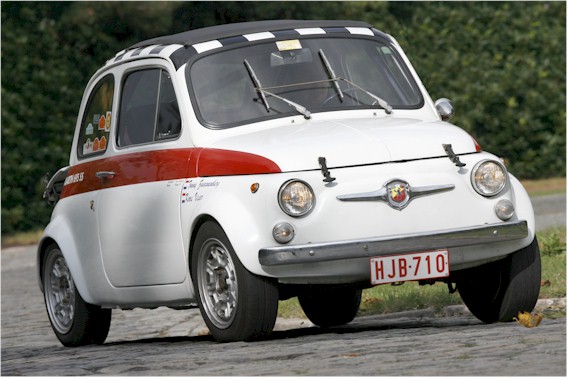-
Insurance
InsuranceAbout our productsLearn about insuringGet a quote Get current values, historical values, model history and more.
-
Valuation
ValuationHagerty valuation toolLook up a vehicle value Get current values, historical values, model history and more.
-
Events
EventsHagerty official eventsHagerty ClubhouseEvent calendar
-
Entertainment
EntertainmentMore to explore
- Portal login
1966 Abarth 695
SS Coupe 0.7 L
Vehicle values by condition
Fair
Condition 4
£30,400
#4 cars are daily drivers, with flaws visible to the naked eye. The chrome might have pitting or scratches, the windshield might be chipped.
Good
Condition 3
£42,500
#3 cars could possess some, but not all of the issues of a #4 car, but they will be balanced by other factors such as a fresh paint job or a new, correct interior.
Excellent
Condition 2
£53,300
#2 cars could win a local or regional show. They can be former #1 cars that have been driven or have aged. Seasoned observers will have to look closely for flaws.
Concours
Condition 1
£73,700
#1 vehicles are the best in the world. The visual image is of the best car, unmodified, in the right colours, driving onto the lawn at the finest concours.
Insurance premium for a
1966 Abarth 695 SS Coupe 694
valued at £42,500
£243.99
/ year*
History of the 1964 - 1971 Abarth 695

1964 - 1971 Abarth 695
Austrian-born Carlo Abarth established himself as a designer first with Castagna, then with Cisitalia, a company he founded with Rudolf Hruska and Piero Dusio. When the latter left for Argentina in 1949, Abarth established his namesake company, using his astrological sign (the scorpion) as its logo.
Despite a string of collaborations with some of the most important names in automobile design, for many the Abarth name will always be associated closest with his adaptation of the Fiat 500: the Abarth 595. Intended to be a sports car for those of average means, the car looked outwardly very similar to the 17bhp Fiat 500D on which it was based, but the porting, polishing, improved camshafts, high-compression pistons, big-bore block, Solex 34 PBIC carburettor and revised oiling system of the engine meant that the 594cc two-cylinder engine developed 30bhp including a huge increase in mid-range torque that halved the 500's 0-60mph times. Wider wheels and uprated suspension completed the package.
For those who wanted more, the 'Esse-esse' was produced, giving 34bhp and a top speed of 80mph, but they are exceptionally rare: it is estimated that only 20 Fiat-Abarth 595 SS were produced by the factory.
Today, the biggest problem with the Abarth 595 and 595 SS is authentication. Kits were offered in period, and many replicas have been built in the years since. Proper identification, with the help of an original Italian Libretto document or Abarth Classiche certificate is essential. Correct models should have a 110F chassis number stamped into the firewall and have ‘ABARTH 105’ with the Abarth number stamped into the chassis above the front right-hand wheel arch. This will be of different font to the Fiat number and often not as well-defined.
An Abarth 595 engine should have ‘ABA205’ stamped in it, followed by the 110F number then the Abarth engine number. The ‘ABARTH’ label on the finned sump should also be obvious. All Abarth 595 were white with red decals.
There are few alternatives to the size and power of the Abarth 595; the closest UK offering is the Mini Cooper.
Hagerty Newsletter
Get your weekly dose of car news from Hagerty UK in your inbox

ADVERTISEMENT